Rediscover Calm: Why Neuroscience-Based Anxiety Relief Works
The neuroscience-based anxiety relief program stands apart because it rewires the root mechanisms of stress that keep you feeling stuck, even when you “know better.” Instead of settling for surface-level solutions or generic positivity, this approach is grounded in rigorous scientific research—each step targets the specific neural circuits responsible for anxiety. Imagine accessing a toolbox that not only reduces symptoms but fundamentally changes your mind’s default settings; this is the promise of neuroscience-based anxiety relief.
By combining rigorously researched exercises with personalized coaching, the program guides you in building neural habits proven to block anxious patterns and create new pathways for emotional control. Deep breathing, focused attention, and somatic regulation are not random relaxation tricks; they are science-backed interventions shown to dampen fight-or-flight triggers and reinforce prefrontal regulation. This approach replaces temporary calm with lasting transformation.
Understanding the Science: How Your Brain Creates—and Solves—Anxiety

Anxiety is produced by a network of brain regions working in constant feedback—most notably, the amygdala, bed nucleus of the stria terminalis (BNST), hippocampus, and prefrontal cortex. The amygdala acts as your internal alarm system, quickly flagging possible threats and triggering physiological stress responses. Sustained or chronic anxiety, however, is governed more by the BNST, which maintains the body and mind in a state of readiness even when no actual threat is present. The hippocampus links stressful experiences to memory, while the prefrontal cortex is responsible for reasoning and emotional regulation, ideally “putting the brakes” on runaway fear or worry.
Repeated activation of these circuits—whether from life events, chronic stressors, or learned thinking patterns—forms deeply ingrained neural habits. Over time, these patterns can become recursive: mild stress triggers the brain as if facing danger, leading to anxious thoughts, bodily tension, and even avoidance behaviors. The more these loops recur, the stronger and more automatic they become.
The neuroscience-based anxiety relief program uses targeted mental and physical exercises to help you rewire your anxious brain, gradually replacing old fear pathways with new circuits for calm and control. By shifting this activity, you can transform how your brain and body respond to stress, opening new pathways to lasting emotional resilience.
The Neurobiology of Anxiety: How Relief Happens in the Brain
Anxiety relief starts with the brain—where the amygdala (our primal alarm system), hippocampus (memory hub), and prefrontal cortex (decision-making center) interact. When stress builds, the amygdala signals “danger,” flooding the body with tension. The neuroscience-based anxiety relief program uses evidence-based strategies to influence these systems directly.
What makes the anxious brain so powerful is its ability to create deeply ingrained “threat templates.” The amygdala, processing every ambiguous signal, is lightning-fast at flagging even tiny uncertainties as dangers. In a matter of milliseconds, it can fire off a fight-or-flight response before logic even enters the conversation. But this evolutionary speed—which once kept us safe in the wild—becomes problematic in modern life, where deadlines and social judgment are misread as survival threats. The hippocampus, our brain’s storyteller, catalogs these stress events and shapes context—sometimes mislabeling safe settings as triggers if earlier trauma remains unresolved.
This is where our higher brain—the prefrontal cortex—comes in. Responsible for flexibly assessing situations, overriding instant reactions, and making nuanced decisions, the prefrontal cortex partners with the amygdala dynamically. However, in chronic anxiety, this partnership weakens: the “logical brakes” of the prefrontal cortex seem to fail, and the brain gets caught looping old fears, distorting reality with negative bias. Avoidance, perfectionism, and hypervigilance are not personality flaws, but the outputs of these neural loops.
The neuroscience-based anxiety relief program teaches you to identify these patterns the moment they begin, giving you the tools to intervene and redirect them. The goal isn’t just quelling symptoms, but fundamentally resetting the communication lines within your brain. Over time, as you repeatedly activate positive coping skills—like mindfulness, reappraisal, and body-based regulation—the neural wiring becomes more efficient at distinguishing true threats from background noise. This rewiring restores agency, allowing you to respond to life with curiosity and purpose rather than fear and reactivity. With evidence mounting from imaging studies, hormone profiles, and lived experience, it’s clear: changing your brain’s conversation about anxiety truly changes your life.
Top Science-Backed Techniques for Rapid Neuroscience-Based Anxiety Relief
Programs focused on neuroscience-based anxiety relief don’t just talk about feelings—they mobilize your body and brain using proven methods. Through regular practice of neuroplasticity stress reduction techniques—like focused attention, mindfulness, and positive visualization—you can reshape your brain’s response to triggers, build resilience, and experience sustainable anxiety relief. Three standout tools include:
1. Guided Breathing for Brain Reset
Research shows that slow, diaphragmatic breathing can quickly lower anxious arousal by activating the vagus nerve, reducing heart rate and tension, and signaling the brain to “stand down.” Try a 4-6-8 sequence: breathe in for 4, hold for 6, out for 8. Repeat for two minutes; most clients feel the difference right away. This isn’t a distraction, but a neural “reset” for your anxiety circuits.
2. Sensory Regulation and Somatic Exercises
Body-based interventions are foundational to neuroscience-based anxiety relief. Progressive muscle relaxation and bilateral stimulation (gentle movement alternating sides of the body) use direct physical feedback to interrupt anxiety loops and send calming signals straight to the threat detection centers of the brain. Practiced daily, these exercises gradually retrain physical and emotional habits.
3. Cognitive Reappraisal for Thought Control
This cornerstone technique helps you reinterpret stressful situations through a neuroscience-informed lens. Instead of catastrophizing, you catch automatic thoughts and deliberately reframe them, which has been shown in studies to change brain activity and reduce emotional overreaction. Over time, you teach your brain to choose grounded, realistic narratives—building resilience from the inside out.
All techniques in the neuroscience-based anxiety relief program are tailored for individual strengths, symptoms, and life demands. You’re not left guessing; every tool is backed by real neuroscience and adapted to your unique profile.
Real Success Story: Emma’s Journey with Neuroscience-Based Anxiety Relief
Emma, a 36-year-old communications director, came to the program feeling her career success was undermined by relentless anxiety—constant rumination, difficulty sleeping, and overwhelming nerves before presentations. She’d tried meditation apps and self-help courses, but nothing stuck. What made neuroscience-based anxiety relief different?
Week 1–3: Mapping Triggers and Learning Brain Basics
Emma began by journaling her triggers and learning about the neuroscience of anxiety—how certain patterns in the brain, especially in the amygdala and prefrontal cortex, were keeping her locked into stress. Seeing her neural “profile” brought new clarity and hope.
Week 4–8: Building New Relief Pathways
Through daily program modules, Emma practiced breathing protocols and sensory regulation each morning, reinforcing the skills with feedback from her coach. She learned to pause, monitor physical cues, and use cognitive reappraisal before meetings. Gradually, her nervous system became more adaptive; she started receiving positive feedback from coworkers on her composure and clarity.
Week 9–16: Mastery and Flourishing
Emma was able to turn anxiety triggers into opportunities for growth. She developed a “relief ritual” before high-pressure events, which helped her lead with confidence. Her sleep improved. She became an advocate for neuroscience-based anxiety relief at her company, sharing techniques with her team. Neurofeedback assessments confirmed reduced baseline anxiety and stronger executive function.
Emma’s experience highlights a key truth: neuroscience-based anxiety relief is not just symptom management—it transforms your baseline, helping you thrive in demanding professional and personal environments.
Integrating Neuroscience-Based Anxiety Relief Into Your Life

Lasting change requires consistency and support. The neuroscience-based anxiety relief program is structured to make practice easy, motivation sustainable, and progress measurable. Each week comes with interactive lessons, video demonstrations, and personalized check-ins. Journaling, live coaching, and progress assessments ensure you master every tool and can celebrate milestones along the way.
If you’re a driven professional, high achiever, or creative struggling under chronic stress, this approach gives you not just hope, but actionable pathways forward. Unlike “one-size-fits-all” solutions, neuroscience-based anxiety relief continually adapts to your evolving needs, keeping the science personal, practical, and effective.
How Neuroscience-Based Anxiety Relief Outperforms Traditional Methods
What sets neuroscience-based anxiety relief apart is the fusion of hard research, deep personalization, and skill-building for real-life contexts. Unlike standard therapy sessions or digital mental health apps, you’re guided through cutting-edge practices shown to change brain circuits—not just emotions. This means results are tangible, sustainable, and future-proof.
From the initial contact, every aspect of the neuroscience-based anxiety relief journey is designed to prompt action: booking a consultation, scheduling a session, enrolling in a course, or accessing exclusive guides. You don’t just learn—you implement, reflect, and measure your success over time. As your confidence grows, setbacks become learning opportunities, not barriers to progress.
Who Benefits From Neuroscience-Based Anxiety Relief?
- Leaders are tired of anxiety undermining their influence and creativity.
- Parents seeking lasting change for themselves or teens facing stress.
- Professionals who want high-impact results beyond “just talking about it.”
- Individuals seeking more than temporary fixes and looking for sustained transformation.
- Individuals ready for proven brain science, guided support, and ongoing accountability.
Frequently Asked Questions: Neuroscience-Based Anxiety Relief
u003cstrongu003e1. What is anxiety, neurologically speaking?u003c/strongu003e
Anxiety, from a neuroscience perspective, is the activation of the brain’s fear and stress circuits—primarily the amygdala, which sounds the alarm in response to perceived threats, and the prefrontal cortex, which tries to regulate and interpret these signals. Chronic anxiety results when these circuits become overactive or hyper-sensitized, leading to persistent worry, restlessness, and even physical symptoms. Neuroscience-based anxiety relief targets these exact regions—using strategies to quiet the amygdala and strengthen prefrontal control, helping the brain learn new, healthier stress responses.u003cbru003e
u003cstrongu003e2. Can neuroscience-based anxiety relief work for panic attacks?u003c/strongu003e
Absolutely. Panic attacks occur when the brain’s threat system goes into overdrive, often without real danger present. Neuroscience-based techniques—like targeted breathing protocols, sensory grounding, and cognitive reappraisal—are designed to intercept these surges at the neural level, gently activating the parasympathetic nervous system and calming body and mind. Over time, regular practice teaches your brain to rebound faster, reducing both the frequency and the intensity of panic attacks.
u003cstrongu003e3. How does dehydration affect anxiety in the brain?u003c/strongu003e
Lack of hydration can disrupt electrolyte balance and impair communication between neurons, making the brain more susceptible to stress signaling. When dehydrated, neural function slows down, and the body’s natural ability to regulate mood and anxiety diminishes. Neuroscience-based anxiety relief advocates for foundational wellness habits—like hydration and nutrition—because these support optimal neuronal health, improve neurotransmitter production, and stabilize stress circuits for better overall mental resilience.u003cbru003e
u003cstrongu003e4. Are there differences in anxiety relief for adults and children, according to neuroscience?u003c/strongu003e
Yes. Children’s brains are highly plastic and sensitive to their environments, with emotional regulation circuits still developing. Neuroscience-based anxiety relief programs for children use gentle, play-based exercises, mindful movement, and sensory engagement to help build strong neural patterns for calm. Adults benefit from more structured protocols—like cognitive reappraisal and stress mapping—because their prefrontal cortex is more mature. Both age groups see faster progress when their programs are personalized to their developmental stage and brain maturity.u003cbru003e
u003cstrongu003e5. Is anxiety genetic, and can neuroscience-based intervention change inherited patterns?u003c/strongu003e
Genetics can predispose people to more reactive stress circuits or less efficient emotion regulation networks, but neuroplasticity means these patterns aren’t fixed. Neuroscience-based anxiety relief leverages the brain’s ability to form new connections and modulate genetic expression through targeted practice. Repeated use of emotion regulation and relaxation techniques can “overwrite” inherited tendencies, giving clients practical power over even long-standing family anxiety patterns.u003cbru003e
u003cstrongu003eWhat is generalized anxiety disorder (GAD), and how does neuroscience-based relief differ from standard treatment?u003c/strongu003e
GAD is characterized by persistent, excessive worry that is difficult to control, resulting in restlessness, muscle tension, and concentration issues. Neuroscience-based anxiety relief targets core regulatory circuits (prefrontal cortex, amygdala, insula) using inhibition training, reframing strategies, and biofeedback to reinforce adaptive pathways. Unlike broad-spectrum medication or talk therapy, this approach trains the brain for daily emotional mastery, emphasizing skill-building and active self-regulation.u003cbru003e
u003cstrongu003e7. How can I help someone struggling with anxiety using neuroscience-based principles?u003c/strongu003e
Support starts with understanding—from a neuroscience-based anxiety relief perspective, avoidance, reassurance, or rushing solutions can unintentionally reinforce the stress circuit. Instead, teach calming breathing, support self-awareness, and encourage use of structured coping tools (like journaling, triggers, or practicing somatic regulation). Empathy and consistency help build safer neural pathways for the anxious brain, making social support an active ingredient in recovery.
u003cstrongu003e8. Can anxiety be prevented through neuroscience-based lifestyle changes?u003c/strongu003e
Yes, prevention is one of the strengths of neuroscience-based anxiety relief. Regular exercise, mindfulness, targeted relaxation, sleep hygiene, and nutrition all support the brain’s stress circuits. Building these habits before major transitions or periods of stress creates “buffers” in the nervous system, making it more resistant to developing chronic anxiety down the line. This proactive approach is efficient for high achievers and those with family histories of anxiety.u003cbru003e
u003cstrongu003e9. Which form of anxiety is most common, and does the neuroscience-based program work for all types?u003c/strongu003e
Generalized anxiety, social anxiety, and panic disorder are among the most diagnosed types. Neuroscience-based anxiety relief is adaptable—by assessing an individual’s neural profile and emotional habits, programs are tailored to address the specific brain patterns involved in each diagnosis. Whether it’s fear of public speaking, health-related worry, or panic attacks, the same principles of neuroplasticity and self-regulation apply, ensuring broad effectiveness.u003cbru003eu003cbru003e
10. u003cstrongu003eCan neuroscience-based anxiety relief work with my therapist or medication?u003c/strongu003e
Absolutely—neuroscience-based anxiety relief is designed to work synergistically with both therapy and medication, enhancing your overall path to recovery rather than competing with other forms of care. While conventional therapy often focuses on understanding patterns, processing emotions, or learning coping strategies, neuroscience-based interventions directly target the underlying brain circuits responsible for anxiety.
Take Control With Neuroscience-Based Anxiety Relief
Your future doesn’t have to be dictated by cycles of worry, sleepless nights, or self-doubt. Neuroscience-based anxiety relief empowers you to step off the hamster wheel of temporary fixes and create a durable, measurable transformation at the source—your brain. Imagine days where stress no longer hijacks your attention, where you face challenges with clarity, and where confidence becomes your default setting. Research consistently shows that the sooner you intervene with evidence-based, brain-driven tools, the faster and more profound your results—delaying action only allows anxiety’s neural pathways to become more entrenched.
By booking your personalized strategy call, you’ll receive a one-on-one consultation tailored to your unique patterns, goals, and daily realities—not a generic “diagnosis,” but an accurate map of your stress circuitry and clear next steps for rapid results. This is an opportunity to have your challenges decoded by a neuroscience specialist, to ask your most pressing questions, and to preview how a custom program can help you unlock energy, focus, and emotional balance. When you choose a neuroscience-based anxiety relief program, you’re investing in profound transformation—harnessing cutting-edge science to protect your mental health, advance your career, and strengthen your relationships.
Now is the moment to stop letting anxiety dictate your path. Imagine looking back in just weeks and realizing you’ve built a new, unshakable foundation for thriving in every area that matters most. Don’t wait: schedule your strategy call today and experience firsthand how targeted, science-backed support can change your brain—and your life—for good.
#NeuroscienceBasedAnxietyRelief #AnxietyProgram #StressRelief #AnxietyCoaching #BrainScience #EmotionalResilience #PersonalDevelopment




